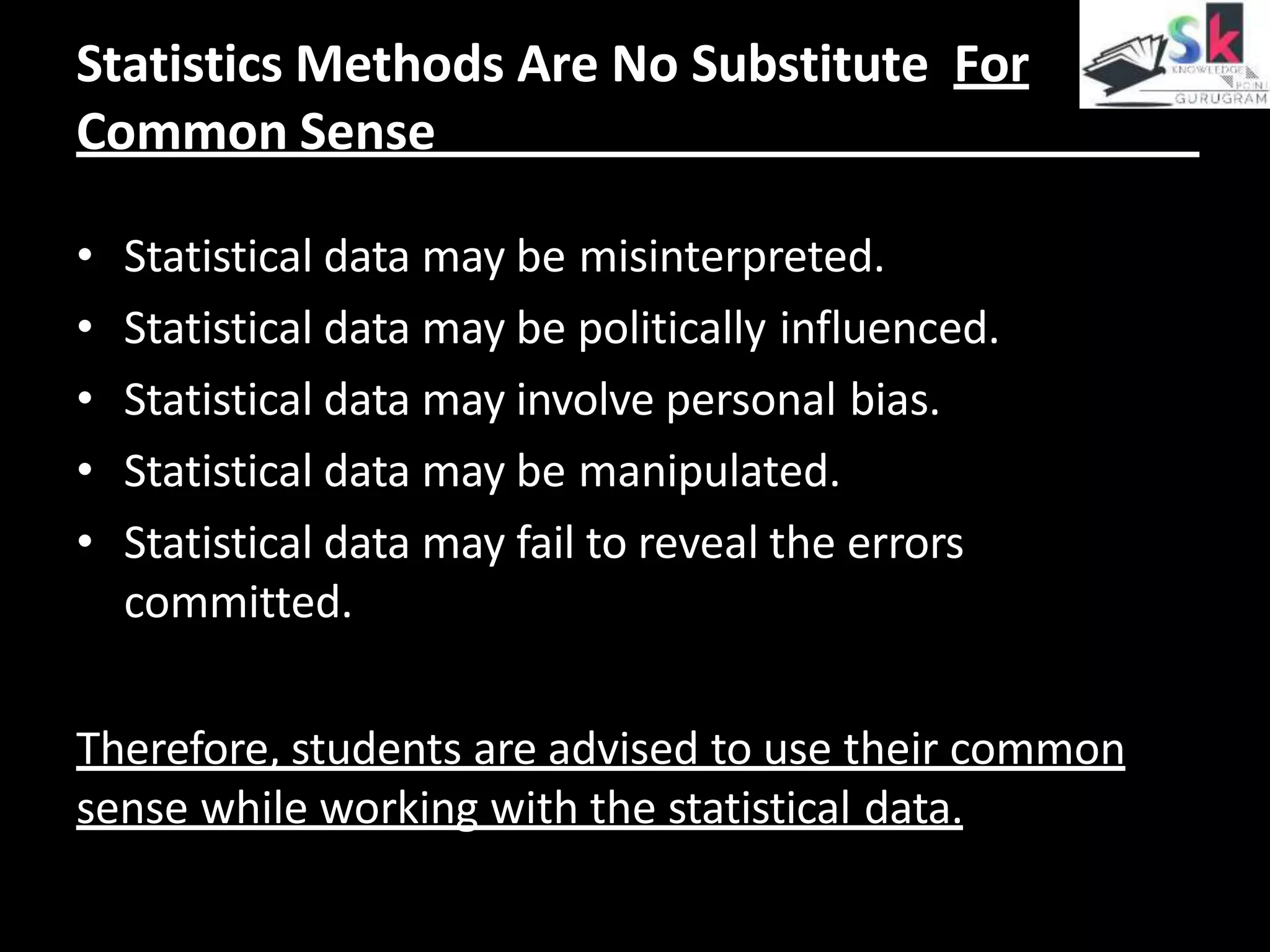The document presents an introduction to statistics and economics, covering fundamental concepts, definitions, and the economic problem related to resource scarcity. It explains the components of an economy, factors of production, and the importance of statistical methods in analyzing economic issues. Additionally, it emphasizes that while statistics is crucial for understanding economics, it should be interpreted with caution due to potential misinterpretations and biases.




















